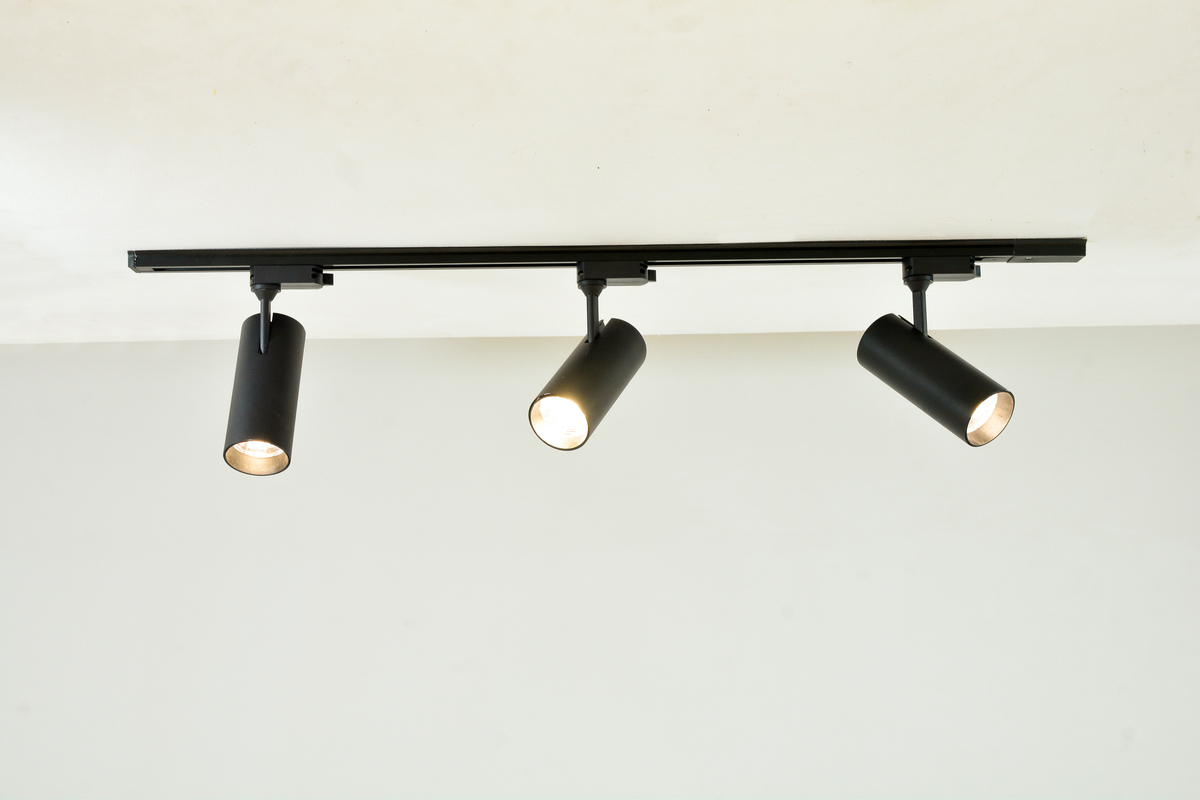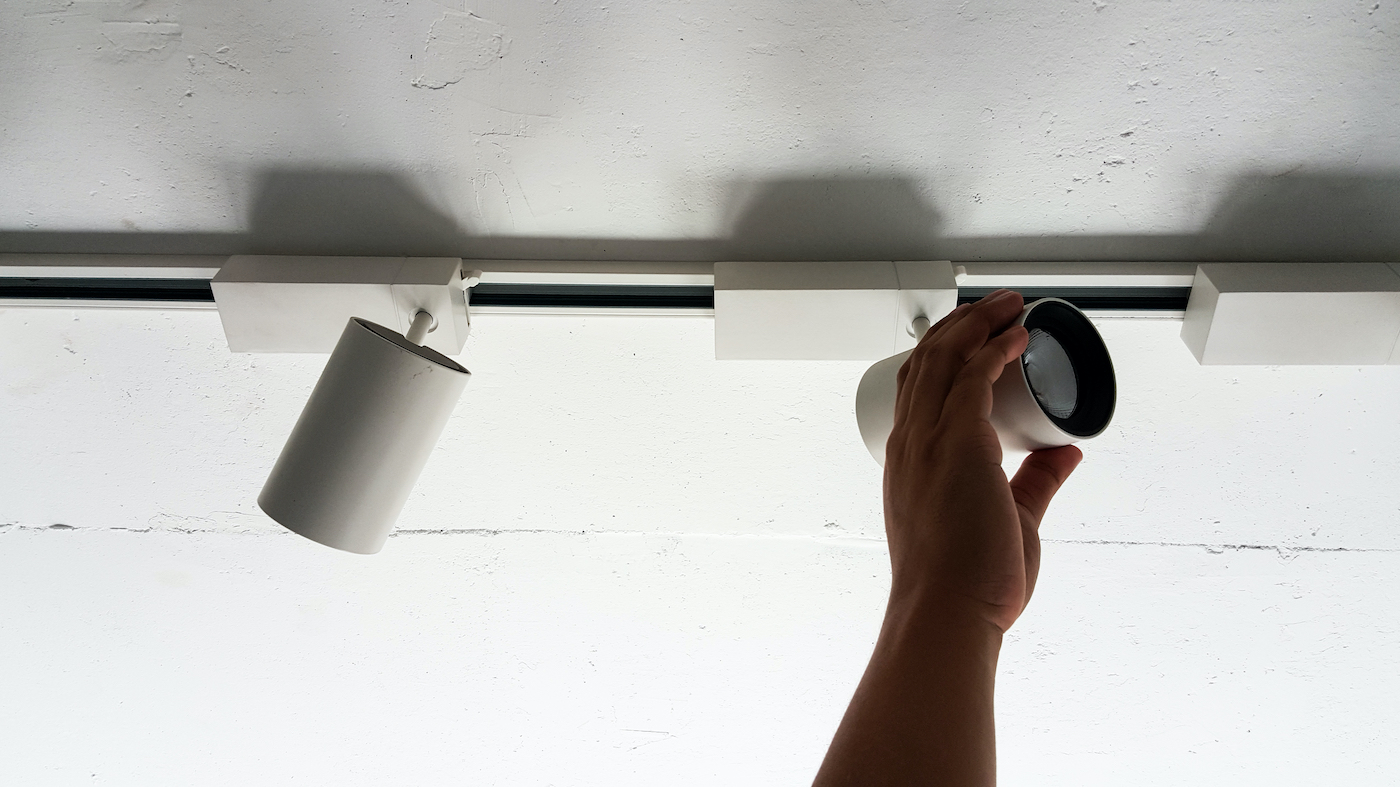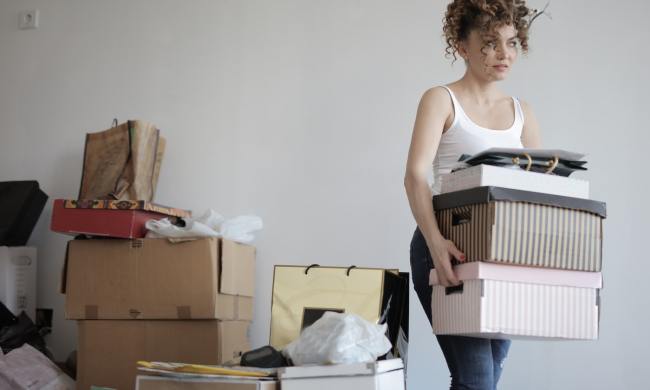Ever since Lightolier Senior Product Designer Anthony Donato was awarded the first track lighting patent in 1961, track lighting has been a fixture in homes worldwide. It offers a trio of benefits: architectural lighting, design, and function.
Although sometimes plagued with an undeserved reputation as dated and uninspired, today’s track lighting has evolved in design and innovation. It’s common to see track lighting units in homes and businesses, regardless of decorating style differences, and there are units available in every color, size, and price point. Today, Donato’s products are found in both the Museum of Modern Art and the Smithsonian.
Can track lighting serve your home? Here’s everything you need to know.
What is track lighting?
In track lighting, fixtures attach to a continuous track that contains electrical conductors that power multiple lights along the track, versus standard light fixtures that route electrical wiring to a single source of light. Tracks can be mounted to walls or ceilings and come in both straight and curved formations. The heads (or lights) can be positioned (and repositioned) in various ways along the track, as well as pivoting to project light in the direction the homeowner desires.
There are two major parts of track lighting:
- Track: The track is wired to power and holds the conductors for the heads. This is the part that’s mounted to the ceiling or wall, with the opening facing down or out.
- Heads: The heads are the lamp-holding fixtures, connected to the power source inside the track with two metal tabs that also lock and secure it in place on the track.
There are two basic types of track lighting: plug-in and hardwired. Plug-in track lights do not require electrical wiring; however, they must be located near an outlet. Hardwired track lights need to have electrical connections made during installation through a junction box, which is an electrical box in the ceiling or wall. Note: Hardwiring is usually best handled by a professional electrician.
 Installing track lights
Installing track lights
While many track light systems sold in home improvement stores and websites come installation-ready, if hardwiring is required for your specific track lighting project, it is always recommended to hire a professional electrician.
DIY installation tips
Installation-ready track lights include a short track with compatible heads. If you are planning to DIY your track lighting, look for sets with adjustable tracks so you can position the lights to illuminate every corner of the room.
Track lighting doesn’t have to be difficult to install. With a little planning and care, you should be able to install track lights in just a single afternoon. But before shopping for track lights, do the following:
- Determine where you want the lighting installed
- Decide how you will be fastening the track to the ceiling
- Measure the length of track needed
- Locate where to connect to your power source
While hardwiring is best done by an electrician, this is how to install plug-in track lighting:
- Locate the track and then plug in.
- Measure out the distance to where your lighting will be located.
- Use the preinstalled adhesive strips. Simply remove the strips, placing them 12 inches apart, and press firmly.
Making the most of your ceiling track lighting
Be strategic: Keep in mind that track lights are designed to be task lighting, so when placing track light fixtures, be strategic where you install them to maximize lighting coverage. Direct beams of light where they are most needed—directly over sofas or other conversation areas or angled toward entryways or darker corners of the room.
Work with your open floor plan: With the continued popularity of open floor plans, track lighting offers a way to bring continuity between the spaces while keeping a light and airy design aesthetic. Install ceiling track lights along the length of the family room to the dining room to the kitchen for maximum light and drama.
Make sure heads are adjustable: For pure drama in rectangular rooms, set up the tracks along the entire perimeter of the room. After the tracks are in place, you can pop the track lighting heads wherever they are needed—over your favorite reading chair, directed at an array of family photos on a fireplace mantle, or directly over the seating area. By choosing adjustable heads, you can rotate the heads to provide full lighting coverage of the room.
Think about color: With so many color options available for ceiling track lights, you can blend the lights into your decor by choosing a color palette that matches the shade of your walls. This will allow the lighting to mix in with the room’s background rather than become the room’s focal point.
Work with natural lighting: If your room has large windows, track lighting provides ample illumination at night without blocking natural light during the day. In homes with high beamed or angled ceilings, you can run the ceiling track lights parallel to the beams, creating a sense of visual harmony.
We spend so much time choosing furniture, artwork, carpeting, and accessories for a room, but lighting is probably one of the most important design features, and sadly it is often overlooked. With so many different styles, colors, and sizes available, track lighting can add both drama and illumination to virtually any room in your home. Whether you are looking for a quick DIY update or you’re having a professionally installed lighting overhaul with track lighting, the results are always nothing short of dramatic.

 Installing track lights
Installing track lights



